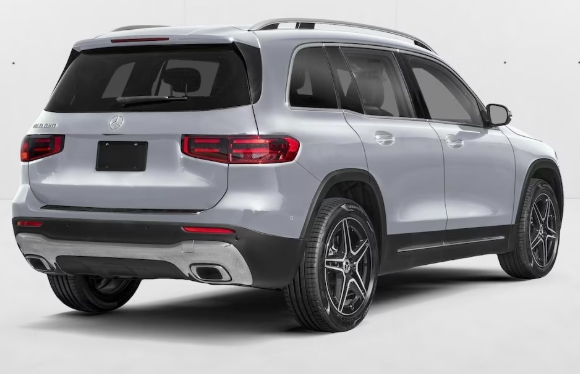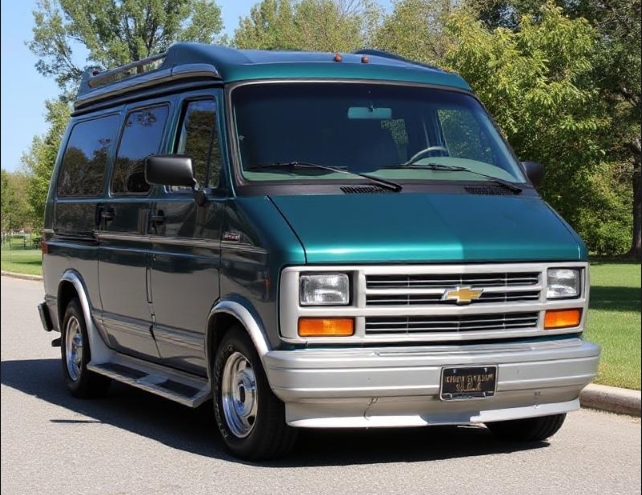The Three-Pointed Star’s SUV Supremacy: Charting the Evolution of the Mercedes-Benz GLE, GLC, and GLB
In the sprawling, fiercely competitive landscape of the modern luxury automobile market, no segment is more crucial than the Sport Utility Vehicle. For Mercedes-Benz, a brand synonymous with engineering prowess and opulent comfort, the shift from a sedan-centric world to an SUV-dominated one required a strategic, multi-pronged approach. This strategy culminated in a clear, logical, and incredibly successful lineup of utility vehicles. At the heart of this success are three models that perfectly encapsulate the brand’s ability to cater to diverse needs: the GLE, the GLC, and the GLB.
Each vehicle, while sharing the prestigious three-pointed star, carves out a distinct identity. The GLE stands as the luxurious, tech-forward descendant of a segment pioneer. The GLC represents the perfectly balanced, best-selling core of the lineup. And the GLB is the clever, pragmatic newcomer offering unmatched versatility in a compact package. Their evolution tells the story not just of three SUVs, but of a brand adapting, innovating, and ultimately conquering a new automotive era.
The GLE: The Progenitor of a Dynasty (Successor to the M-Class)
To understand the GLE, one must first acknowledge its trailblazing ancestor: the M-Class. Launched in 1997 with the W163 generation, the M-Class (or ML) was a revolutionary vehicle that brought unibody construction and car-like refinement to the rugged SUV world. After three successful generations (W163, W164, W166), Mercedes-Benz rationalized its naming structure in 2015. “GL” would now signify all SUVs, with the final letter linking it to the core sedan family. Thus, the M-Class, aligned with the E-Class in size and status, was reborn as the GLE.
.
THIS could come in handy for your auto garage (and everywhere else!):

.
First Generation GLE (W166 Facelift & C292 Coupe) | 2015 – 2019
The first vehicle to wear the GLE badge was not an all-new model, but a significant facelift of the third-generation M-Class (W166). Launched for the 2016 model year, it introduced a new front fascia, updated technology, and, crucially, the new name. This generation also debuted the GLE Coupe (C292), a direct challenger to the BMW X6, featuring a dramatic fastback roofline.
Models and Trim Levels (North American Market focus):
- GLE 300d 4MATIC (2016): An initial diesel offering powered by a 2.1-liter turbocharged four-cylinder, it was short-lived in the U.S. market.
- GLE 350 / GLE 350 4MATIC: The volume seller, equipped with a robust and reliable 3.5-liter naturally aspirated V6 producing 302 horsepower. It was the bedrock of the standard GLE range.
- GLE 400 4MATIC (2016-2017) / GLE 450 4MATIC (2019): This model used a 3.0-liter twin-turbo V6, offering a significant step up in power (329 hp) for those wanting more performance without venturing into full AMG territory. It was later rebadged as the GLE 450 for its final model year.
- GLE 550e 4MATIC Plug-In Hybrid (2016-2018): A forward-thinking model, it combined the twin-turbo V6 with an electric motor for a total system output of 436 horsepower and a modest all-electric range. It showcased the brand’s early commitment to electrification in the SUV segment.
- Mercedes-AMG GLE 43 / GLE 43 Coupe: Initially launched as the GLE 450 AMG Sport, this model was soon brought fully into the AMG family. It featured an enhanced version of the 3.0-liter twin-turbo V6, producing 362 horsepower (later 385 hp), along with AMG-tuned suspension, braking, and styling.
- Mercedes-AMG GLE 63 / GLE 63 S / GLE 63 S Coupe: The apex predators of the range. Both used a hand-built 5.5-liter twin-turbo V8. The GLE 63 produced 550 horsepower, while the “S” model unleashed a thunderous 577 horsepower, accompanied by a more aggressive chassis setup and standard performance equipment.
Second Generation GLE (V167 & C167 Coupe) | 2019 – Present
For the 2020 model year, an all-new GLE (V167) debuted on Mercedes’ new Modular High Architecture (MHA) platform. This was a technological leap forward, defined by the revolutionary MBUX (Mercedes-Benz User Experience) infotainment system with its dual widescreen displays and “Hey, Mercedes” voice assistant. The standout feature was the optional E-Active Body Control, an advanced hydropneumatic suspension that could individually control each wheel, allowing it to “bounce” itself free from sand or lean into corners like a motorcycle. For the first time, a third-row seat option was also available on the standard SUV. The sleeker Coupe variant (C167) followed a year later.
Models and Trim Levels (North American Market focus):
- GLE 350 / GLE 350 4MATIC: The new entry point switched to a 2.0-liter turbocharged inline-four engine producing 255 horsepower, offering improved efficiency.
- GLE 450 4MATIC: This model became a segment sweet spot, featuring a silky-smooth 3.0-liter turbocharged inline-six with EQ Boost. This 48-volt mild-hybrid system provided 362 horsepower, with the electric motor adding a temporary boost and enabling smoother engine start-stop functionality.
- GLE 580 4MATIC: For V8 enthusiasts, this model paired a 4.0-liter twin-turbo V8 with the EQ Boost system, delivering a potent 483 horsepower.
- Mercedes-AMG GLE 53 / GLE 53 Coupe: Replacing the old “43” models, the AMG 53 features an electrified, high-performance version of the inline-six engine. With an electric supercharger complementing the turbocharger, it produces a responsive 429 horsepower.
- Mercedes-AMG GLE 63 S / GLE 63 S Coupe: The top-tier AMG transitioned to the hand-built 4.0-liter twin-turbo V8, now with EQ Boost. The result is a staggering 603 horsepower and a 0-60 mph time under 3.7 seconds, blending supercar performance with family-hauling practicality.
- GLE 400e 4MATIC Plug-In Hybrid (2024 onwards): A facelift for the 2024 model year reintroduced a much-improved plug-in hybrid, combining the 2.0-liter turbo-four with a powerful electric motor for substantial all-electric range and 381 combined horsepower.
The GLC: The Segment’s New Benchmark (Successor to the GLK)
Before the GLC dominated the compact luxury SUV segment, there was the GLK (X204, 2008-2015). The GLK was loved for its distinct, boxy styling—a scaled-down homage to the legendary G-Wagen. Its upright, utilitarian charm gave it a unique character. But as the market trended towards more fluid, aerodynamic designs, Mercedes saw an opportunity for a complete reinvention. Following the new naming convention, the C-Class equivalent SUV was christened the GLC.
First Generation GLC (X253 & C253 Coupe) | 2015 – 2022
Debuting for the 2016 model year, the GLC (X253) was a radical departure from its predecessor. It shed the GLK’s hard angles for the swooping, elegant lines of the contemporary C-Class sedan on which it was based. The interior was a quantum leap forward in luxury and technology, making it an instant class leader and a sales juggernaut for the brand. In 2017, the GLC Coupe (C253) was introduced, bringing the successful fastback formula to the compact segment.
Models and Trim Levels (North American Market focus):
- GLC 300 / GLC 300 4MATIC / GLC 300 Coupe: The heart of the lineup. It was powered by a 2.0-liter turbocharged four-cylinder engine producing 241 horsepower (bumped to 255 hp in the 2020 mid-cycle refresh). Its blend of performance, luxury, and efficiency made it the default choice for most buyers.
- GLC 350e 4MATIC Plug-In Hybrid (2018-2020): This early PHEV combined the 2.0-liter turbo-four with an electric motor for 315 horsepower, offering a taste of electric driving without range anxiety.
- Mercedes-AMG GLC 43 / GLC 43 Coupe: The perfect “just right” performance model. It used a 3.0-liter twin-turbo V6 producing 362 horsepower (increased to 385 hp in 2020), paired with AMG performance tuning for a thrilling yet daily-drivable experience.
- Mercedes-AMG GLC 63 / GLC 63 S / GLC 63 S Coupe: This is where the GLC entered muscle car territory. It was the only SUV in its class to offer a V8—a hand-built 4.0-liter twin-turbo unit. The GLC 63 made 469 horsepower, while the GLC 63 S unleashed 503 horsepower, turning the sensible compact SUV into a track-capable monster.
Second Generation GLC (X254) | 2023 – Present
The all-new GLC (X254) arrived for the 2023 model year, building on the success of its predecessor with an evolutionary approach. The exterior styling is a subtle refinement, but the interior underwent a revolution, adopting the design of the new W206 C-Class. It is dominated by a large, portrait-oriented central touchscreen and a digital instrument cluster, bringing the latest MBUX technology to the forefront.
Models and Trim Levels (North American Market focus):
- GLC 300 / GLC 300 4MATIC: Currently the sole non-AMG model. It uses an updated 2.0-liter turbocharged four-cylinder engine producing 255 horsepower, but now comes standard with a 48-volt mild-hybrid system (EQ Boost) for enhanced smoothness and efficiency.
- Mercedes-AMG GLC 43 / GLC 43 Coupe (Forthcoming): The V6 is gone, replaced by the technologically advanced, hand-built M139l 2.0-liter turbocharged four-cylinder engine from the AMG C 43. With an electric exhaust-gas turbocharger, it produces 416 horsepower.
- Mercedes-AMG GLC 63 S E PERFORMANCE / Coupe (Forthcoming): Signifying a monumental shift, the beloved V8 is replaced by an astonishingly powerful plug-in hybrid system. It pairs the same M139l engine with a rear-axle-mounted electric motor, delivering a jaw-dropping combined output of 671 horsepower, making it the most powerful GLC ever by a massive margin.
The GLB: The Practical Newcomer
By the late 2010s, Mercedes-Benz had a comprehensive SUV lineup, but it identified a gap between the subcompact GLA and the premium GLC. The market needed a practical, family-oriented compact SUV that prioritized space and utility without sacrificing the Mercedes badge. The answer, unveiled in 2019 for the 2020 model year, was the GLB (X247).
First Generation GLB (X247) | 2019 – Present
The GLB was an instant stroke of genius. While built on the same front-wheel-drive-based platform as the A-Class and GLA, its design was a complete contrast. Instead of sleek curves, the GLB adopted a boxy, upright stance reminiscent of larger, more traditional SUVs. This clever design maximized interior volume, allowing for its game-changing feature: an optional, stowable third-row of seats, a rarity in the compact class. It fused the practicality of a minivan with the desirability of a Mercedes SUV.
Models and Trim Levels (North American Market focus):
- GLB 250 / GLB 250 4MATIC: The core model is powered by a 2.0-liter turbocharged four-cylinder engine making 221 horsepower. It offers a comfortable ride, a high-tech cabin with the MBUX system, and unparalleled practicality for its size. The 2024 facelift introduced a 48-volt mild-hybrid system to this powertrain for improved refinement.
- Mercedes-AMG GLB 35: For those wanting a practical family hauler with a performance edge, the GLB 35 provides the answer. It features an AMG-enhanced version of the 2.0-liter turbo-four, tuned to produce 302 horsepower. Combined with AMG-specific suspension, 4MATIC all-wheel drive, and sportier styling, it creates a unique “hot-hatch-on-stilts” that can carry seven people (in a pinch) with surprising speed.
The GLB platform also serves as the basis for the all-electric EQB, further underscoring its modern engineering and versatility within the broader Mercedes-Benz strategy.
Conclusion: A Cohesive and Dominant Strategy
The evolution of the GLE, GLC, and GLB is a masterclass in market segmentation and brand evolution. The GLE has successfully carried the torch of the pioneering M-Class, transforming from a premium SUV into a high-tech luxury flagship packed with innovation. The GLC executed a perfect pivot from the quirky GLK, creating a new benchmark for the compact luxury segment with its impeccable balance of style, comfort, and performance, becoming the brand’s best-selling vehicle worldwide. Finally, the GLB arrived as a brilliant problem-solver, proving that practicality, versatility, and a premium badge could coexist in a compact, desirable package.
Together, these three models form the formidable core of Mercedes-Benz’s SUV lineup. They demonstrate a clear understanding that today’s luxury buyer isn’t a monolith; their needs range from V8-powered performance to seven-seat practicality and electrified efficiency. By offering distinct solutions under one iconic star, Mercedes-Benz has not just adapted to the age of the SUV—it has defined it.







